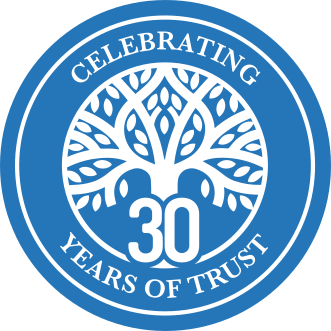CHAPTER 5: INCLUDE SALES AND FINANCIAL EDUCATION
Please try to spend 15 mins brainstorming for yourself, try to answer these questions before reading:
1. My child will not be a salesperson, why does my child need to learn sales and finance?
2. What are basics of financial literacy I should teach my children?
Space for your notes:
.............................................................................................................................................................................................................................................................................................................................…
.............................................................................................................................................................................................................................................................................................................................…
.............................................................................................................................................................................................................................................................................................................................…
.............................................................................................................................................................................................................................................................................................................................…
According to research conducted by sociologist and historian Rainer Zitelmann, many of today’s self-made billionaires and multimillionaires held a sales job, or jobs, when they were younger—a factor they themselves consider as the most important role to their financial success. It’s no coincidence that rich people have strong sales skills. “Sales skills are very valuable. Every company runs on sales,” says Cheryl Palmer, founder of career coaching firm Call to Career (Hill, 2020). Sales and finance are interconnected, which is why I will be discussing them in tandem throughout this chapter. Finance is also the backbone of society and often may be a driving factor for students when picking career paths.
FINANCIAL LITERACY
During both my bachelor’s and master’s studies in business school, I understood little of personal finance. There were no teachers who taught about increasing earning capabilities, the plethora of income stream types, how to reduce spending, how to categorize and analyze spending habits, or, more importantly, the saving options available for spare money. The personal finance topic was sporadically mentioned and only managed to take a few introductory courses in account- ing and corporate finance. Still, the definition of assets and liabilities from a company’s point of view is different from the one in personal finance. This topic of financial literacy is so important in real-life, yet there is so little focus on it in schools.
Based on statistics from The Organization for Economic Co-operation and Development (OECD), in Peru, only forty-one percent of young adults can add two percent interest to an initial savings balance of 100 PEN (Peruvian currency). Even in developed countries such as Denmark, seventy-three per- cent of young adults have little or no knowledge of interest rates (OECD/INFE, 2012).
In addition, the National Financial Educators Council (NFEC) conducted a survey in the US. They asked over a thousand respondents between the ages of eighteen to twenty- four years old which high school subject would benefit their life the most. The majority responded: “money management” (NFEC, n.d.).
Robert Kiyosaki, the author of books focused on financial literacy, including Rich Dad Poor Dad, Rich Dad’s Cashflow Quadrant, and Rich Dad’s Guide to Investing, shared, “One of the reasons the rich get richer, the poor get poorer, and the middle-class struggles in debt are because the subject of money is taught at home, not at school” (OECD/INFE, 2012).
In families where parents are skilled in financial literacy and who take time to teach their children, those children understand “how money works.” However, in families where parents are less familiar with financial planning or banking products, their children have very little help from schools, creating considerable differences in society in terms of the income distribution. According to Oxfam International, the richest one percent of the global population owned eighty- two percent of the wealth created in 2017 (Oxfam International, 2018). As we can see from the statistics, there is a huge difference between the rich and the poor. I believe if we teach financial literacy in schools and at home, we could minimize the gap.
SALES SKILLS
Most of the opportunities I had to practice sales skills such as empathy, objection handling, and persuasion were in group projects inside subjects or courses at university. During my exchange semester within master studies, I had a chance to attend a business school in France. I enrolled in International Negotiations, an entire course designed to teach and practice negotiation skills. In every lesson, two students sat in the middle of the classroom to negotiate a business contract or similar deal. The negotiation was recorded, and then the professor let us rewatch the talk and gave feedback on our performance. My improvements mainly revolved around practicality, from the content and strategy to the body language and eye contact aspects. Constructive feedback is what helps us move forward. I wish teachers in every subject could do the same, providing students with more oral and written feedback.
To be good in sales, a person must possess a specific set of skills, which can be practiced in schools if we direct priority focus. Let’s say Nadine wants to sell a language course to a potential customer named Julie. Apart from knowing all the details about the product or service, Nadine will need to be empathetic to understand Julie’s needs and desires. After introducing the product to the customer, Nadine will also have to be prepared to handle objections and rejections such as, “I will think about it. I won’t probably need it now. The price is quite high for me. I don’t have spare time for learning now.” Nadine needs to be able to convince Julie to buy the course on the spot, as she might not have another chance to speak to the customer. Basically, Nadine needs to get to the bottom of Julie’s objections and understand her barriers to taking the course. Nadine can provide examples of classes or offer discounts to ease the area holding Julie back.
Skills such as empathy, objection handling, or persuasion are essential even if we aren’t sales representatives talking to customers. Those skills are used in everyday life when we talk to family, friends, or colleagues.
Imagine that you are talking to a friend and discussing where to hang out with each other. You want to go to a coffee shop, and your friend wants to go shopping. You then have to sell to your friend that the coffee shop is more suitable. The meaning of selling here is that your friend has to be happy when agreeing with you. As a result, you will have to say things like: “Let’s wait for the upcoming promotion event, where things get way cheaper. Let’s meet at a coffee shop instead to browse the shops online first. I even found a new coffee place that has your favorite carrot cake on the menu this week!”
People that can easily convince others in a reasonable and non-pushy way, with arguments that benefit the listener, more often get what they want. Hence, if we truly care about helping students succeed after school, we need to put more attention on incorporating these sales skills into the syllabus or have a separate course dedicated to practicing them.
Nonetheless, having those subjects or group projects might not be enough because students need real-world experience to truly master the skill. Instead of having a sales project inside the school by dividing students into teams and having them sell fictional products to each other, students could be assigned to work on an actual project, selling a product or service of their choice to potential customers. In schools, students can use the class time to share obstacles and tips on improving their skills. Schools can be a place to reflect so that after school, students can apply the feedback.
According to Dr. Brian Williams’s article on Brevet, a sales consulting company, nearly thirteen percent of all the jobs in the US are full-time sales positions (Williams, n.d.), which means that one out of eight students in every class will most likely earn their living as sales representatives. The rest of the class will benefit from the ability to sell or persuade others as well because the understanding of tactics is applicable.
Both at school and home, we may not let children practice persuasion skills much. Whenever they tend to disagree with us, we don’t let them use argumentation to discuss. Instead, we as adults immediately say those children have badly behaved and should be quiet and listen to us. We rarely ask the child, “why do you think so” to allow them to win an argument over ours. This is contradictory to helping them succeed later in life, therefore both at home and school, we need to flip our approach.
THE INTEGRATION OF FINANCE AND SALES
The ability to negotiate and close sales with financial literacy is so important in real life, yet K–12 education in many countries doesn’t have those subjects in the curriculum. After K–12, if students don’t attend business school, they will rarely have a chance to learn about these important skills. Stepping into professional careers without the ability to sell (even to sell oneself to the potential employer) and basics about per- sonal and corporate finance makes it difficult for students to succeed. Students might not have the interest to learn sales and finance while still at school, so we need to make it more universally attainable or integrated into our school systems.
In a recent conversation with Martin Mikes, a wealth manager of a bank, I learned to be eligible to be his client, I would need to have at least 500 thousand USD of available funds in a bank account. When I asked which types of people have that spare money, I learned there are three groups: business owners, high-level managers, and celebrities.
I asked Martin to consider the frequent interaction with those owners, managers, and celebrities to determine which skills they all have in common. Martin said, “They are all very good at sales, persuading and giving arguments that make people agree with them. They are also very good with numbers. They know how to earn money, spend money, and invest money. They can make deals that are financially beneficial for themselves and their companies through their ability to convince others.”
After this interview, I realized that no matter what our students and children do in life after school, we should let them learn about finance and sales as much as possible. It doesn’t matter how much money people start with, as long as they make smart, informed choices.
BASIC FINANCIAL LITERACY WORKSHOP
Finances are one of the major causes of stress when a student steps into adulthood, which could be avoided with some basic financial knowledge. Therefore, I include a brief workshop below. Consider exploring it by yourself before sharing it with your children or students.
What should we do when we receive the monthly salary, and how should we create budgets for different spending categories?
In terms of income allocation, according to a bank I worked in, the suggested split might be as follows:
• 50% for mandatory expenses (the ones that happen monthly, such as accommodation and utilities, groceries, transportation costs, or banking fees).
• 15% percent for entertainment (such as sport, culture, gifts, clothes, or eating out).
• 10% as savings for bigger purchases (such as electronics or holidays).
• 15% for savings and investments for retirement.
• 10% as reserve savings, which would be used to cover a sudden gap in income. Ideally, this fund should cover three to six months in case of losing a job or experiencing a possible global crisis.
Developing a habit of saving from every paycheck and building an emergency fund is crucial to be prepared for harder times as well as helps us avoid borrowing money or increasing debt. When our emergency funds can cover us for three to six months, we can start looking for investment opportunities with additional savings.
When we consider where to invest spare funds, which assets to buy, we need to distinguish that there are two types of assets. The ones with cash flow and the ones without cash flow. The ones with cash flow generate additional income for us, while the ones without cash flow will not provide us with any recurring income. Examples of cash flow-generating assets can be a piece of real estate we rent out or a car we rent out. In comparison, examples of assets that do not generate any regular income can be gold, land, or collectibles such as paintings. We hold these noncash flow-producing assets and wait for them to increase in value, after which we can sell them, but they don’t produce any monthly income for us.
Rich people focus on buying assets, things that they own and either produce cash flow or increase in value. While according to Robert Kiyosaki, the middle class usually buys liabilities, things they own and either decreases in value or requires cash for maintenance (Kiyosaki, 2000).
The difference between assets and liabilities is another subject not often properly taught, leading to misunderstandings. Even in business schools, students only discuss the meaning of an asset and a liability from a company’s point of view. Yet, in personal finance, the meaning is different. In a company, an asset is everything a company owns, and liability is everything a company owes. In personal finance, an asset is simply everything you own that will make you richer, while liability is everything you own that won’t directly make you richer.
As I already shared above, an asset can be a piece of real estate that you rent out, a car that you rent out, gold, land, or collectibles. A liability can be the furniture you have at home or the phone you are using, as these things mostly decrease in value. A house or a car that you are using and not renting out is also a liability, as it does not directly make money for you. In addition, it requires monthly maintenance, so living in a fancy house or driving an expensive car will require you to make enough money from other sources to cover the monthly costs.
So far, I have been talking about how to spend money. What to do when we receive a salary and what should we buy. How- ever, earning money is also important. There are multiple ways to earn, multiple categories of income to explore.
Active versus passive income - another key point to under- stand. Active income requires trading your time for earnings. You are paid after a certain job is done. Examples of active income can be a full-time job, where you receive a salary, sales where you get a commission after selling a product or a service, freelancing in graphic design where you get paid for designing a logo, or teaching online, where you run live lessons. Usually, if you stop working, you won’t have income.
With passive income, you earn from past efforts, and you are usually paid more than once. Even if you stop working for some weeks or months, you still get paid. I have identified six examples of passive income:
1. Rental income - from renting out a house, a room, a car, a piece of land for parking purposes, etc.
2. Royalty income - from writing books, creating board games, photos, etc., where you make the product once, and whenever someone buys a copy, you get paid.
3. Profit income - from starting and automating a business and earning from a profit share.
4. Interest income - simply from interest rates in a savings account.
5. Dividend income - by owning stocks that pay dividends.
6. Advertising income - such as a YouTube channel running ads and reaching many subscribers.
We all have to start with active income, but the wealthy always try to shift their focus to building passive streams of income by buying things that generate additional income. In other words, they are spending on assets.
To start having a stream of passive income right now, I suggest you open an investment account and purchase a dividend-paying stock. Apart from stocks, try to explore all other five categories I have identified to find out which one suits you best. Remember that passive income doesn’t happen overnight. Begin today and be patient!
It is also useful to have basic knowledge of banking products, such as the difference between checking accounts and savings accounts, the difference between a debit card and a credit card. Trying to open an investment account through a bank, buying stocks, bonds, or mutual funds. Learning how mortgages and other loans work. Bank personnel usually provide consultations about all of these products for free, so I would recommend spending some time reading and asking the banking personnel about some of the products mentioned above.
To improve financial literacy further, I recommend these books:
• Rich Dad Poor Dad, Cashflow Quadrant, and Rich Dad’s Guide to Investing. All from Robert Kiyosaki. Robert Kiyosaki also created a board game, called Cashflow. Playing this board game with family and children teaches managing personal finance in a fun way.
• Think and Grow Rich from Napoleon Hill from 1937 is one of the classics in personal finance.
• Last but not least, I would recommend looking at an older book called The Richest Man in Babylon from G.S. Clason from 1926.
CONNECTING THE DOTS
If we can teach both sales skills and financial literacy to every student at school and every child at home, then we will prepare solid ground for them to succeed when they step into real life and become independent. These two specific skills will accompany everyone for the rest of their life.
Before we help every child to unlock their full potential, put- ting importance on both financial literacy and sales skills can establish firm foundations, from which our children can safely focus on doing things they love and are talented at.
DAVID PHAM


 English
English
 Tiếng Việt
Tiếng Việt



 Trung tâm Anh ngữ Apollo Việt Nam
Trung tâm Anh ngữ Apollo Việt Nam



-miLvgkuA1rT13CGj.jpg)


![350+ TỪ VỰNG TIẾNG ANH CHO BÉ THEO NHỮNG CHỦ ĐỀ QUEN THUỘC NHẤT [KÈM FLASHCARD]](/attachments/2023/12/tu-vung-tieng-anh-cho-be-M4HEgr4fSYlmqYF3.jpg)






































